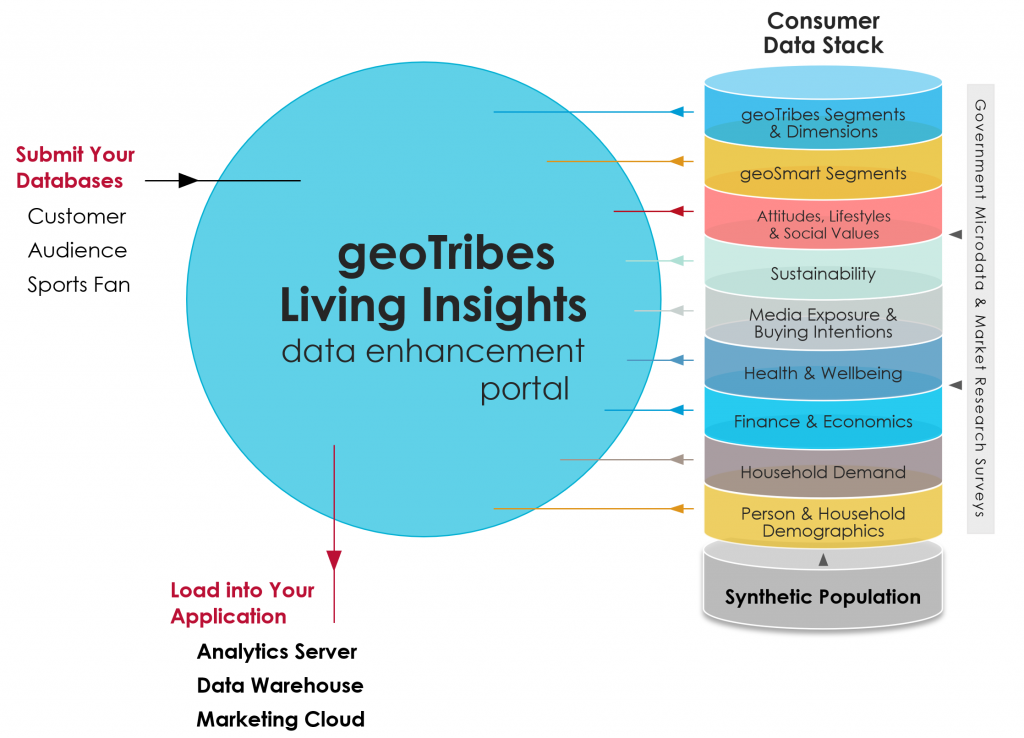Without a doubt, insights from market research surveys and Government microdata have the potential to make a great contribution to our understanding of customer motivations and behaviour.
However, because these insights are held in presentation reports and stand-alone survey respondent databases, they generally have not been readily appended to first-party databases. At the same time the need to enhance first-party databases with rich profiling data from these sources is increasing due to:
- The expanding use of CRM and CDP systems which has accentuated the need for ‘soft’ consumer measures to be available on first-party databases. This is to support the creation of subtle positioning and communications strategies grounded in what really matters to customers.
- The enhanced capabilities for analytics, visualization and targeting on CRM databases due to predictive analytics and data visualization tools like R, Python, Salesforce Einstein, H2O.ai, DataRobot, Tableau and PowerBI. Essentially, these powerful tools are only as good as the data they feed upon.
- The limitation of traditional data enhancement sources like mobility and transaction data to provide soft insights and the threat to their continued availability due to tightening privacy legislation.
- Diminished access to traditional data enhancement sources caused by Google’s withdrawal of third-party cookies, changed privacy defaults in Apple’s IOS 14 and the Australian Attorney General is now proposing new regulations to curtail the use of location data, hashed emails, online identifiers, behavioural, cultural and economic characteristics which are defined as ‘personal information’.
Most market research insights are collected on single-use surveys, but when you think about it, it seems totally crazy to collect basic consumer reference data like media exposure, lifestyle, buying intentions, sustainability actions and motivational psychology over and over again in individual studies.
Why doesn’t someone design a set of reference data in these basic areas and collect it rigorously on a well-designed and controlled sample survey? Then use the latest advances in big-data processing, machine learning, synthetic population modelling and secure cloud-based service provision to reliably and rigorously make the data available on demand, where and when it’s needed in analytics servers, data warehouses and marketing clouds. This would provide valuable augmentation process for behavioural data and complete the customer knowledge picture, although it would not replace specialized consumer research.

At RDA, we have developed the Living Insights Data Enhancement Portal to provide a new pathway for creating a 360 degree customer view based on market research for every record on first-party databases large and small, including:
- Customer / Member / Sports Fan Databases
- Audience / Mobility Databases
- Market Research Surveys
Also, with respect to increasing privacy sensitivities and regulation, market research data comes from fully consented and incentivized sources, while government microdata complies with the most rigorous statutory standards of anonymity and privacy. Scoring the Living Insights data onto first-party databases is totally parametric and doesn’t use any one-for-one matching, anonymized or otherwise.
The client-side analyses which are supported by data enhancement through the Living Insights Portal include:
- Customer Profiling
- Behavioural Attribution
- Database Segmentation
- Audience Selection
- Data Visualization
- Predictive Analytics
- Adding Life to Behavioural Personas
These are just examples, but the possibilities are endless!
If you have any questions about the Living Insights Data Enhancement Portal and first-party data enhancement more generally, contact the friendly RDA Technical Team on +61 2 8923 6600 or send an email to contact@rdaresearch.com.
